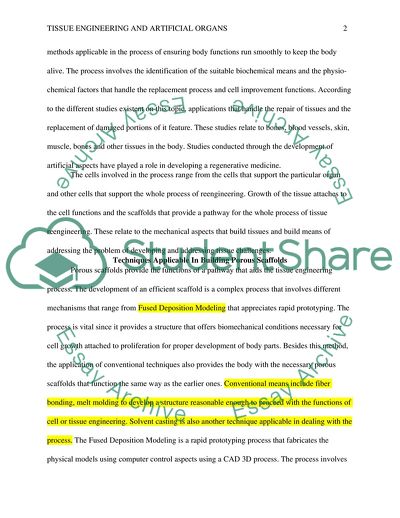Cite this document
(Tissue Engineering and Artificial Organs Essay Example | Topics and Well Written Essays - 1750 words, n.d.)
Tissue Engineering and Artificial Organs Essay Example | Topics and Well Written Essays - 1750 words. https://studentshare.org/biology/1844265-tissue-engineering-and-artificial-organs
Tissue Engineering and Artificial Organs Essay Example | Topics and Well Written Essays - 1750 words. https://studentshare.org/biology/1844265-tissue-engineering-and-artificial-organs
(Tissue Engineering and Artificial Organs Essay Example | Topics and Well Written Essays - 1750 Words)
Tissue Engineering and Artificial Organs Essay Example | Topics and Well Written Essays - 1750 Words. https://studentshare.org/biology/1844265-tissue-engineering-and-artificial-organs.
Tissue Engineering and Artificial Organs Essay Example | Topics and Well Written Essays - 1750 Words. https://studentshare.org/biology/1844265-tissue-engineering-and-artificial-organs.
“Tissue Engineering and Artificial Organs Essay Example | Topics and Well Written Essays - 1750 Words”. https://studentshare.org/biology/1844265-tissue-engineering-and-artificial-organs.


